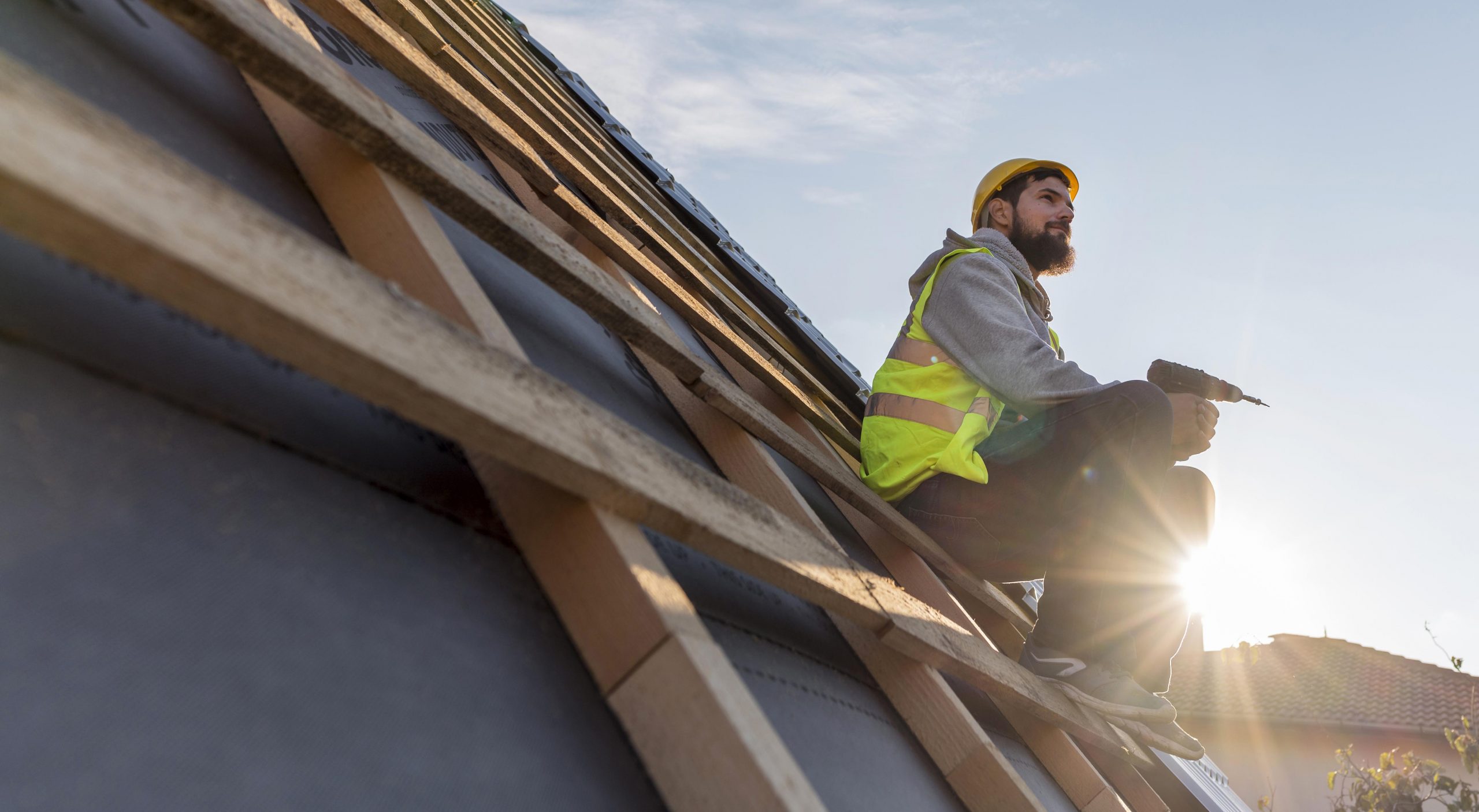The roof takes up a lot of room, yet Ottawa homeowners often lose awareness of it over time. Even though most roofs will last at least 15 years (or longer), you should be maintaining it from the beginning. Let’s take it from the rooftop with some of our favorite roofing tips.
1. Safety First
Heading out onto the roof before you are ready can land you in a cast or two. Even if you notice a terrible leak, the last thing you want to do is look before you leap. First thing’s first: make sure the roof is clear of debris and that inclement weather has passed. Put on safety equipment, such as non-slip boots. A harness may also be necessary. If you have to use a ladder, make sure you have someone to spot you going up and down.
The best thing you can do, however, is pick up the phone and call a professional to help.
2. Hose Down
Having trouble finding the pesky leak? Bring a garden hose up onto the roof with you. Spray water across the roof then have someone inside the house scan for any water. Section off bits of roof at a time, since that can help you find the cracks or punctures much faster.
Never attempt to do this during the wintertime. The water may freeze and cause damage as it expands and contracts. Also, working on a frozen roof is dangerous.
3. Stopping Ice Dams
When wintertime comes around in Ottawa, you will notice that ice can rapidly form on the roof. This is why it is important to make sure there is no debris on the roof and that you gutters are clear. Sometimes, backed up water on the roof will freeze, pulling up the shingles or other roofing materials. As it melts, that water will work its way into the less protected layers of the roof.
You can install ice and rain shields and a drip edge along the roof. That will help prevent ice damming.
4. Gutter Cleaning
As mentioned, keeping the gutters clean is one of the best things you can do for the health of your roof. A clogged gutter is often the reason behind roof leaks. Gutters weighed down the dead leaves and branches can also rip away from the fasteners and ruin the roof. So, keep those pathways free and clear of obstacles.
5. Preventing Dry Rot
Note any parts of the roof that are sagging? Could be dry rot. The shingles around the soft spot may also look worn or brittle. To prevent dry rot, you should install soffit vents. The easiest way to do that is to drill holes into the soffit so that air comes through the underside and pushes out heat.
6. Look at Valleys
The roof is made of valleys and ridges. Valleys are the intersections where two parts of the roof dip together. The ridge is where the highest points come together. However, only valleys tend to fall victim to leaks. That is because it is where the water trickles down as it sheets off the roof. Since valleys are the lowest points of a roof, debris also gathers there. Keep the valleys free of debris, like leaves and sticks, and also look out for any damaged shingles.
7. Breathe
Your roof is not an airtight object. As temperatures rise and fall, the materials should be able to expand, contract, and return to neutral. Improper ventilation can lead to things like dry rot and moisture build up. Your utility bill will also be off the charts. Vents, attic fans, ridge vents, and intake vents in the soffits are all essential. Make sure they are working properly.
8. Shingle Damages
Shingles are meant to endure harsh weather conditions. But they should not be dilapidated within 8 years. You want to get up on the roof once in a while to check for things like missing nails, loose granules, tearing or curling. Those could be signs of manufacturing defects or improper installation, especially if it happens within a few years of your roof being replaced or installed.
As time goes on, your roof will become more vulnerable to damage. That said, any time you spot shingle damage, make sure you deal with it. Otherwise, you could have a more expensive repair job brewing.
9. No Streaks
When you are doing inspections throughout the year, take a long look at the color. Does it match the original shade from when you installed the roof? Some sections of the roof—usually the northward section—are prone to growing moss and mold. This is due to a lack of sunlight and humidity. The streaking caused by mold or fungus might not look harmful, but it can damage the roof and cut its lifespan short.
If your roof seems to always have issues with mold and moss, install some zinc strips along the ridge. Zinc is environmentally safe but will protect the shingles flawlessly from algae, mold, moss, and fungus.
10. Don’t Forget Insulation
Remember that ventilation we talked about? Insulation plays a huge role in that. To balance out heat gain and loss, it is best to include a layer of insulation and a vapor retarder in the attic ceiling to prevent moisture from rising. It also helps to add venting where the air can freely pass through. The vents should be around 1-inch wide between roof sheathing and insulation.
Wrapping Up
Bottom line: Make routine maintenance a priority. You will have little to no problems if you spend a little time on your room throughout the year. Use these tips and tricks to protect your roof—and everything underneath it.




0 Comments